标签:简单 cts ext hid The == display gen --
1.创建project数据库表

INSTALLED_APPS = [ ‘django.contrib.admin‘, ‘django.contrib.auth‘, ‘django.contrib.contenttypes‘, ‘django.contrib.sessions‘, ‘django.contrib.messages‘, ‘django.contrib.staticfiles‘, ‘app01‘, #新增app ]

from django.db import models # Create your models here. class Business(models.Model): # id 系统默认id列,自增,主键 caption = models.CharField(max_length=32) # 32表示字符长度 class Host(models.Model): nid = models.AutoField(primary_key=True) hostname = models.CharField(max_length=64,db_index=True) ip = models.GenericIPAddressField(protocol=‘ipv4‘,db_index=True) port = models.IntegerField() b = models.ForeignKey(to=‘Business‘,to_field=‘id‘)
运行: python manage.py makemigrations python manage.py migrate
Ok后,使用Navicat Premium软件方可查看!
2.操作数据库表
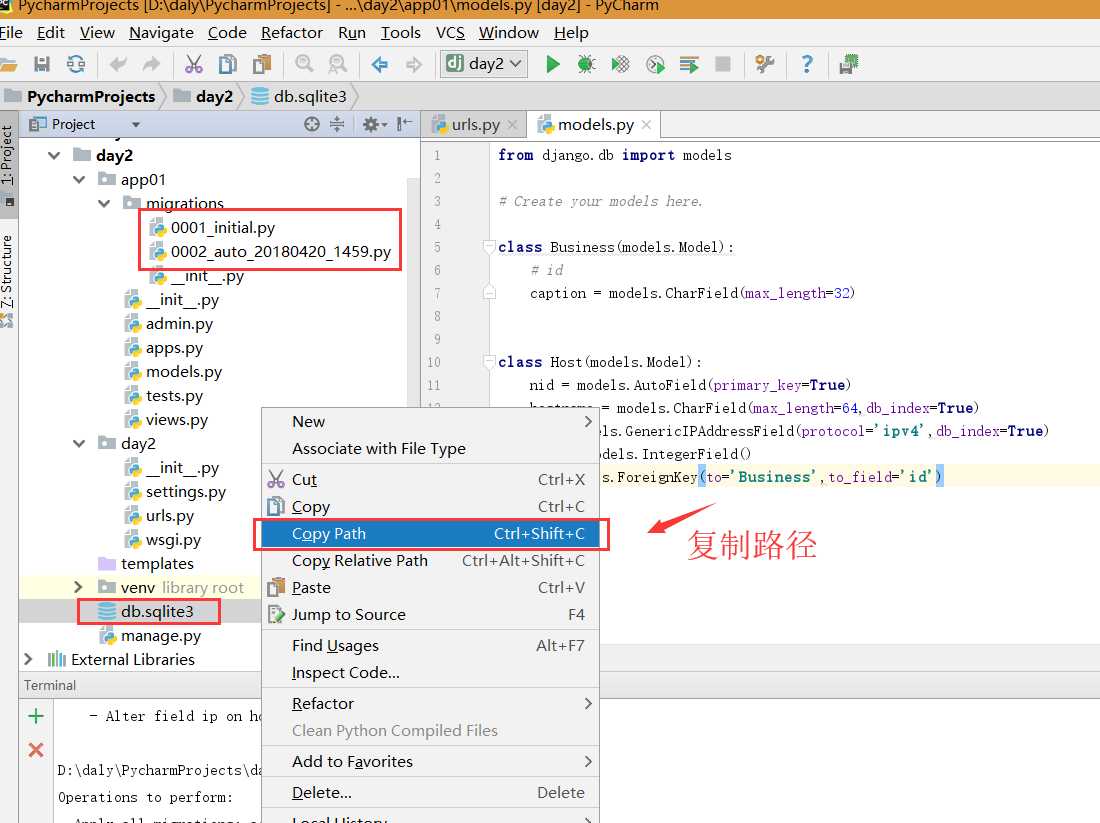
运行Navicat Premium
点击连接,使用SQLite抓取数据
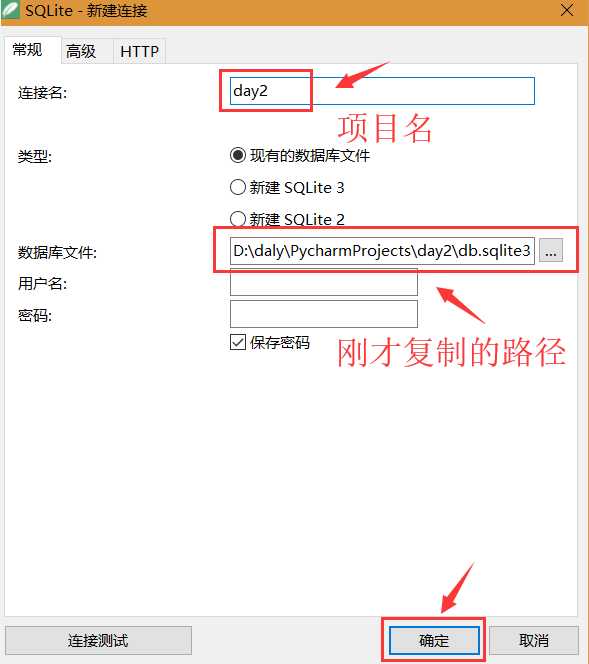
确认后

获取单表单数据的三种方式

from django.contrib import admin from django.conf.urls import url from app01 import views urlpatterns = [ url(r‘^admin/‘, admin.site.urls), url(r‘^business/‘, views.business), ]

from django.shortcuts import render,HttpResponse,redirect from app01 import models # Create your views here. def business(requset): v1 = models.Business.objects.all() #QuerySet #[obj(id,caption,code),obj(id,caption,code),obj(id,caption,code)] v2 = models.Business.objects.all().values(‘id‘,‘caption‘) # QuerySet # [{‘id‘:1,‘caption‘:‘苹果‘},{‘id‘:2,‘caption‘:‘‘香蕉},{‘id‘:3,‘caption‘:‘菠萝‘},{‘id‘:4,‘caption‘:‘梨子‘}] v3 = models.Business.objects.all().values_list(‘id‘,‘caption‘) # QuerySet # [(0,苹果),(2,香蕉)] return render(requset,‘business.html‘,{‘v1‘:v1,‘v2‘:v2,‘v3‘:v3})

from django.db import models # Create your models here. class Business(models.Model): # id caption = models.CharField(max_length=32) code = models.CharField(max_length=32,null=True,default=‘apple‘)

<!DOCTYPE html> <html lang="en"> <head> <meta charset="UTF-8"> <title>Title</title> </head> <body> <h1>业务线列表(列表)</h1> <ul> {% for row in v1 %} <li>{{ row.id }}-{{ row.caption }}-{{ row.code }}</li> {% endfor %} </ul> <h1>业务线列表(字典)</h1> <ul> {% for row in v2 %} <li>{{ row.id }}-{{ row.caption }}</li> {% endfor %} </ul> <h1>业务线列表(元组)</h1> <ul> {% for row in v3 %} <li>{{ row.0 }}-{{ row.1 }}</li> {% endfor %} </ul> </body> </html>
效果显示

一对多跨表操作(第一种)

from django.contrib import admin from django.conf.urls import url from app01 import views # from django.urls import path urlpatterns = [ url(r‘^admin/‘, admin.site.urls), url(r‘^business/‘, views.business), url(r‘^host/‘, views.host), #在business基础上 ]

from django.db import models # Create your models here. class Business(models.Model): # id caption = models.CharField(max_length=32) code = models.CharField(max_length=32,null=True,default=‘apple‘) class Host(models.Model): nid = models.AutoField(primary_key=True) hostname = models.CharField(max_length=64,db_index=True) ip = models.GenericIPAddressField(protocol=‘ipv4‘,db_index=True) port = models.IntegerField() b = models.ForeignKey(to=‘Business‘,to_field=‘id‘)

from django.shortcuts import render,HttpResponse,redirect from app01 import models # Create your views here. def host(request): v1 = models.Host.objects.filter(nid__gt=0) #for row in v1: #print(row.nid,row.hostname,row.ip,row.port,row.b_id,row.b.id,row.b.caption,row.b.code,sep=‘\t‘) # return HttpResponse(‘戴利祥‘) return render(request,‘host.html‘,{‘v1‘: v1})

<!DOCTYPE html> <html lang="en"> <head> <meta charset="UTF-8"> <title>Title</title> </head> <body> <h1>业务线列表(列表)</h1> <table border="1"> <thead> <tr> <th>主机名字</th> <th>IP</th> <th>端口</th> <th>业务线名称</th> <th>业务线编码</th> </tr> </thead> <tbody> {% for row in v1 %} <tr aa="{{ row.nid }}" ab="{{ row.b.id }}"> <td>{{ row.hostname }}</td> <td>{{ row.ip }}</td> <td>{{ row.port }}</td> <td>{{ row.b.caption }}</td> <td>{{ row.b.code }}</td> </tr> {% endfor %} </tbody> </table> </body> </html>
效果
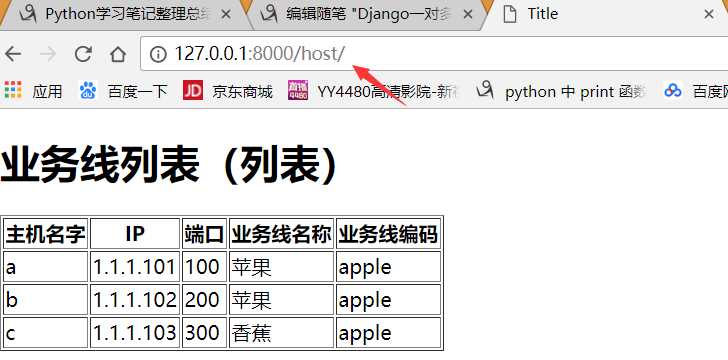
另外两种(三种放在一起):

def host(request): v1 = models.Host.objects.filter(nid__gt=0) for row in v1: print(row.nid,row.hostname,row.ip,row.port,row.b_id,row.b.id,row.b.caption,row.b.code,sep=‘\t‘) v2 = models.Host.objects.filter(nid__gt=0).values(‘nid‘,‘hostname‘,‘b_id‘,‘b__caption‘) # print(v2) for row in v2: print(row[‘nid‘],row[‘hostname‘],row[‘b_id‘],row[‘b__caption‘]) v3 = models.Host.objects.filter(nid__gt=0).values_list(‘nid‘,‘hostname‘,‘b_id‘,‘b__caption‘) # #print(v3) for row in v3: print(row) # return HttpResponse(‘戴利祥‘) return render(request,‘host.html‘,{‘v1‘: v1, ‘v2‘:v2 ,‘v3‘:v3})

<!DOCTYPE html> <html lang="en"> <head> <meta charset="UTF-8"> <title>Title</title> </head> <body> <h1>业务线列表(列表)</h1> <table border="1"> <thead> <tr> <th>主机名字</th> <th>IP</th> <th>端口</th> <th>业务线名称</th> <th>业务线编码</th> </tr> </thead> <tbody> {% for row in v1 %} <tr aa="{{ row.nid }}" ab="{{ row.b.id }}"> <td>{{ row.hostname }}</td> <td>{{ row.ip }}</td> <td>{{ row.port }}</td> <td>{{ row.b.caption }}</td> <td>{{ row.b.code }}</td> </tr> {% endfor %} </tbody> </table> <h1>业务线列表(字典)</h1> <table border="1"> <thead> <tr> <th>主机名字</th> <th>业务线名称</th> </tr> </thead> <tbody> {% for row in v2 %} <tr aa="{{ row.nid }}" ab="{{ row.b__id }}"> <td>{{ row.hostname }}</td> <td>{{ row.b__caption }}</td> </tr> {% endfor %} </tbody> </table> </table> <h1>业务线列表(元组)</h1> <table border="1"> <thead> <tr> <th>主机名字</th> <th>业务线名称</th> </tr> </thead> <tbody> {% for row in v3 %} <tr aa="{{ row.0 }}" ab="{{ row.2}}"> <td>{{ row.1 }}</td> <td>{{ row.3 }}</td> </tr> {% endfor %} </tbody> </table>
print输出结果:
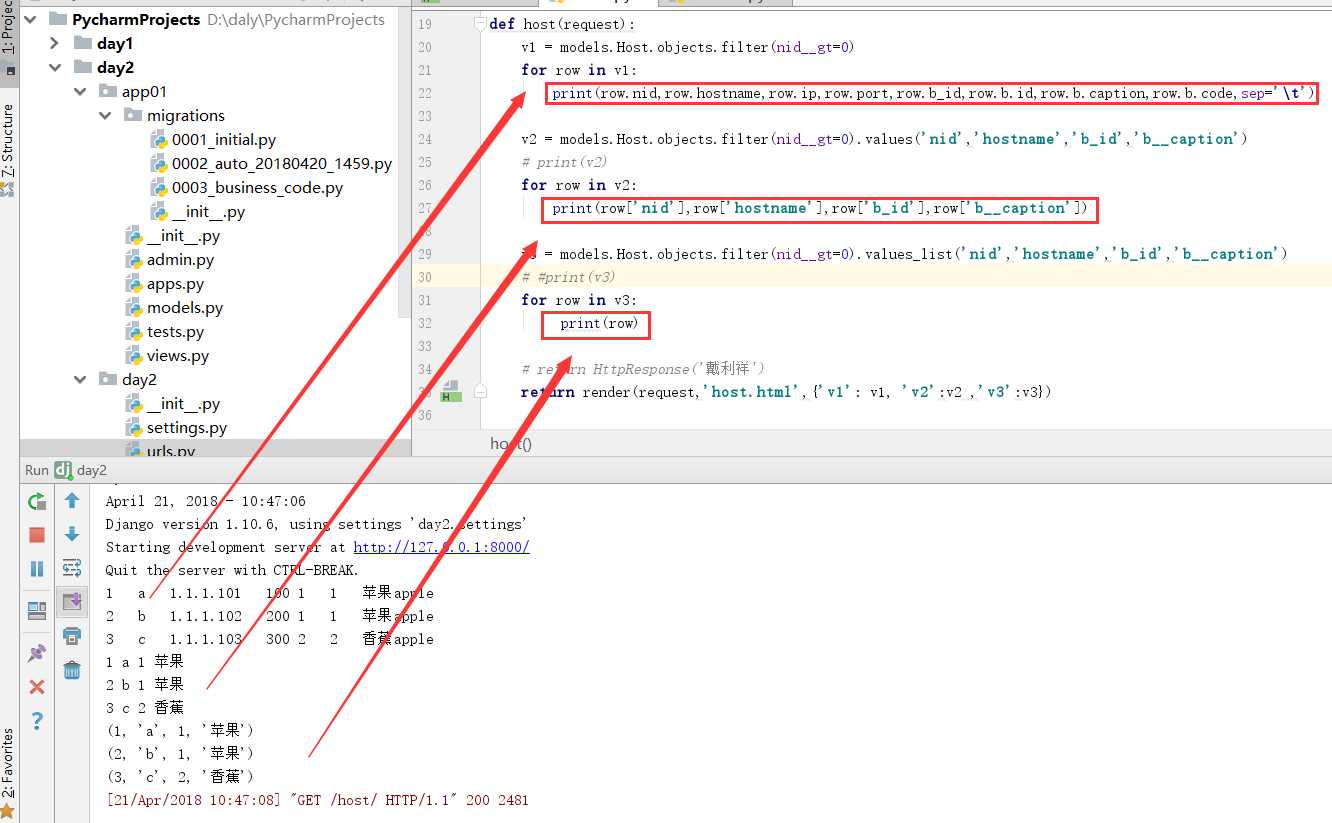
刷新:http://127.0.0.1:8000/host/
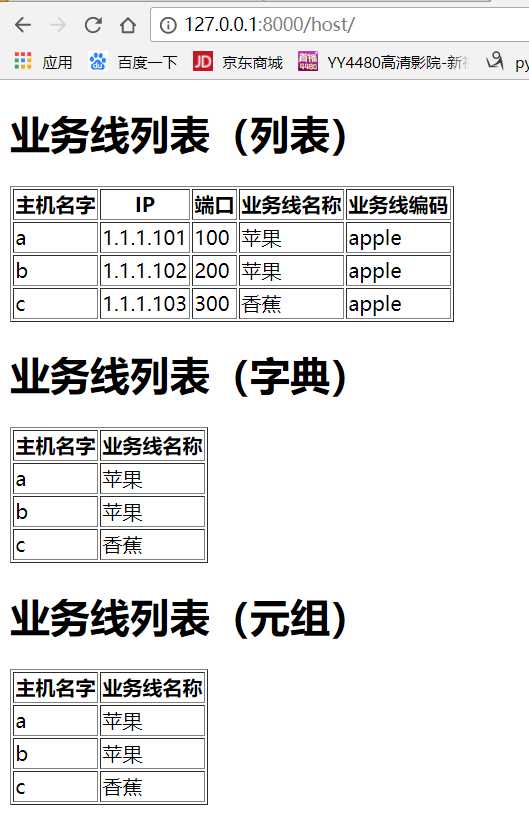
模拟对话框增加一对多数据示例

from django.shortcuts import render,HttpResponse,redirect from app01 import models # Create your views here. def business(requset): v1 = models.Business.objects.all() #QuerySet #[obj(id,caption,code),obj(id,caption,code),obj(id,caption,code)] v2 = models.Business.objects.all().values(‘id‘,‘caption‘) # QuerySet # [{‘id‘:1,‘caption‘:‘苹果‘},{‘id‘:2,‘caption‘:‘‘香蕉},{‘id‘:3,‘caption‘:‘菠萝‘},{‘id‘:4,‘caption‘:‘梨子‘}] v3 = models.Business.objects.all().values_list(‘id‘,‘caption‘) # QuerySet # [(0,苹果),(2,香蕉)] return render(requset,‘business.html‘,{‘v1‘:v1,‘v2‘:v2,‘v3‘:v3}) def host(request): if request.method == ‘GET‘: v1 = models.Host.objects.filter(nid__gt=0) v2 = models.Host.objects.filter(nid__gt=0).values(‘nid‘,‘hostname‘,‘b_id‘,‘b__caption‘) v3 = models.Host.objects.filter(nid__gt=0).values_list(‘nid‘,‘hostname‘,‘b_id‘,‘b__caption‘) b_list= models.Business.objects.all() return render(request,‘host.html‘,{‘v1‘: v1, ‘v2‘:v2 , ‘v3‘:v3 ,‘b_list‘:b_list}) elif request.method == ‘POST‘: h = request.POST.get(‘hostname‘) i = request.POST.get(‘ip‘) p = request.POST.get(‘port‘) b = request.POST.get(‘b_id‘) # models.Host.objects.create(hostname=h, # ip=i, # port=p, # b=models.Business.objects.get(id=b) # ) models.Host.objects.create(hostname=h, ip=i, port=p, b_id=b, ) return redirect(‘/host‘) #以get分方式重新访问http://127.0.0.1:8000/host/

<!DOCTYPE html> <html lang="en"> <head> <meta charset="UTF-8"> <title>Title</title> <style> .hide{ display: none; } .shade{ position: fixed; top: 0; right:0 ; left: 0; bottom: 0; background: black; opacity: 0.6; z-index: 100; } .add-modal{ position: fixed; height: 300px; width: 400px; top: 100px; left: 50%; z-index: 101; border: 1px solid red; background: white; margin-left: -200px; } </style> </head> <body> <h1>主机列表(列表)</h1> <div> <input id="add_host" type="button" value="添加"/> <!--模态对话框--> </div> <table border="1"> <thead> <tr> <th>主机序号</th> <th>主机名字</th> <th>IP</th> <th>端口</th> <th>业务线名称</th> </tr> </thead> <tbody> {% for row in v1 %} <tr aa="{{ row.nid }}" ab="{{ row.b.id }}" ac="{{ row.b.code }}"> <td>{{ forloop.counter }}</td> <td>{{ row.hostname }}</td> <td>{{ row.ip }}</td> <td>{{ row.port }}</td> <td>{{ row.b.caption }}</td> </tr> {% endfor %} </tbody> </table> <h1>主机列表(字典)</h1> <table border="1"> <thead> <tr> <th>主机名字</th> <th>业务线名称</th> </tr> </thead> <tbody> {% for row in v2 %} <tr aa="{{ row.nid }}" ab="{{ row.b__id }}"> <td>{{ row.hostname }}</td> <td>{{ row.b__caption }}</td> </tr> {% endfor %} </tbody> </table> </table> <h1>主机列表(元组)</h1> <table border="1"> <thead> <tr> <th>主机名字</th> <th>业务线名称</th> </tr> </thead> <tbody> {% for row in v3 %} <tr aa="{{ row.0 }}" ab="{{ row.2}}"> <td>{{ row.1 }}</td> <td>{{ row.3 }}</td> </tr> {% endfor %} </tbody> </table> <div class="shade hide"></div> <!--遮罩层,全屏--> <div class="add-modal hide"> <!--弹出框--> <form method="POST" action="/host/"> <!--编辑弹出框内容--> <div class="group"> <input type="text" placeholder="主机名" name="hostname"/> </div> <div class="group"> <input type="text" placeholder="IP" name="ip"/> </div> <div class="group"> <input type="text" placeholder="端口" name="port"/> </div> <div class="group"> <select name="b_id"> {% for op in b_list %} <option value="{{ op.id }}">{{ op.caption }}</option> {% endfor %} </select> </div> <input type="submit" value="提交"/> <input id="cancel" type="button" value="取消"/> </form> </div> <script src="/static/jquery-1.12.4.js"></script> <!--JS文件--> <script> $(function () { <!--页面框架加载完成--> $(‘#add_host‘).click(function () { <!--绑定事件--> $(‘.shade,.add-modal‘).removeClass(‘hide‘); <!--点击添加按钮,呼出遮罩层与弹出框--> }); $(‘#cancel‘).click(function () { $(‘.shade,.add-modal‘).addClass(‘hide‘); }); }) </script> </body> </html>
新增static/jquery-1.12.4.js 文件
https://files.cnblogs.com/files/dalyday/jquery-1.12.4.js
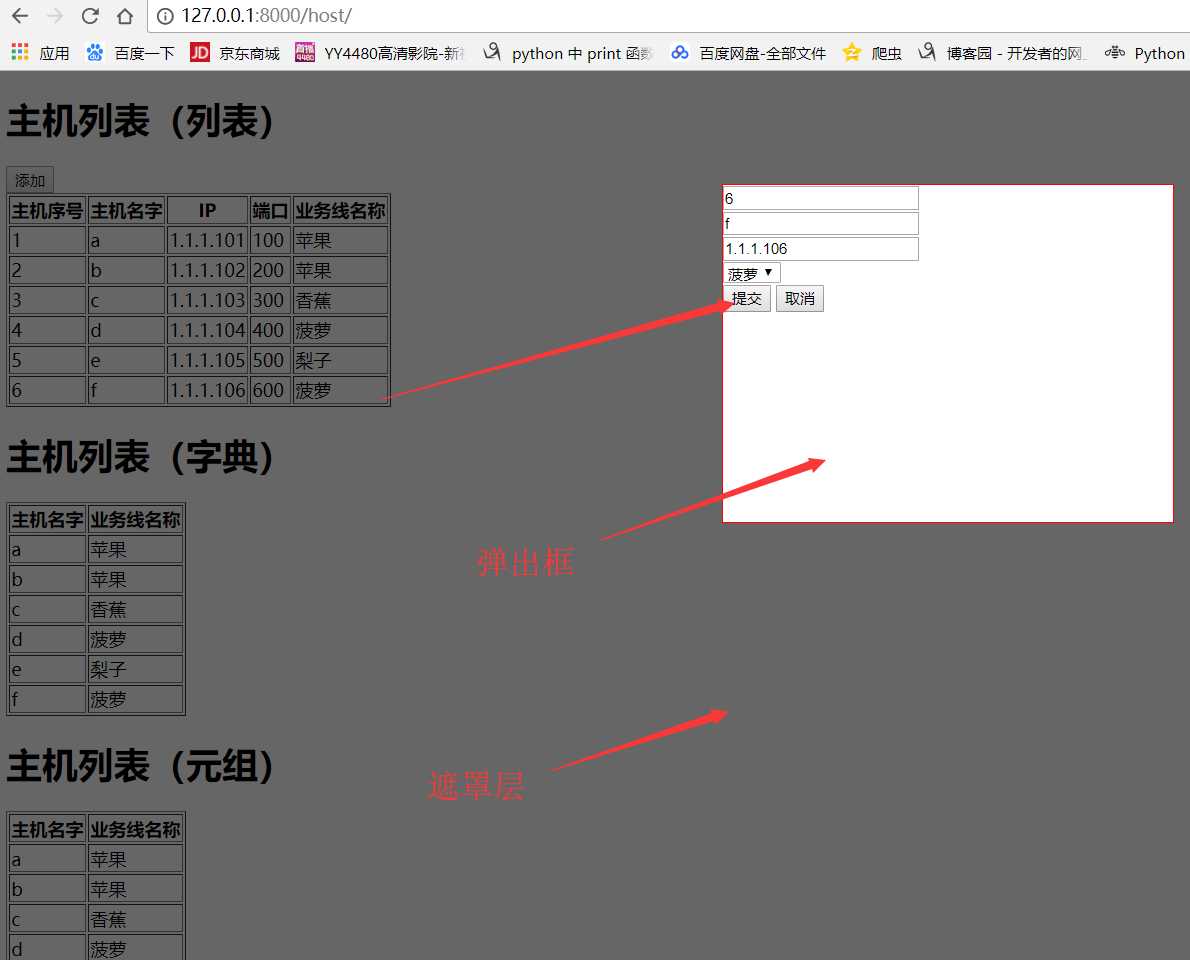
标签:简单 cts ext hid The == display gen --
原文地址:https://www.cnblogs.com/dalyday/p/8891238.html